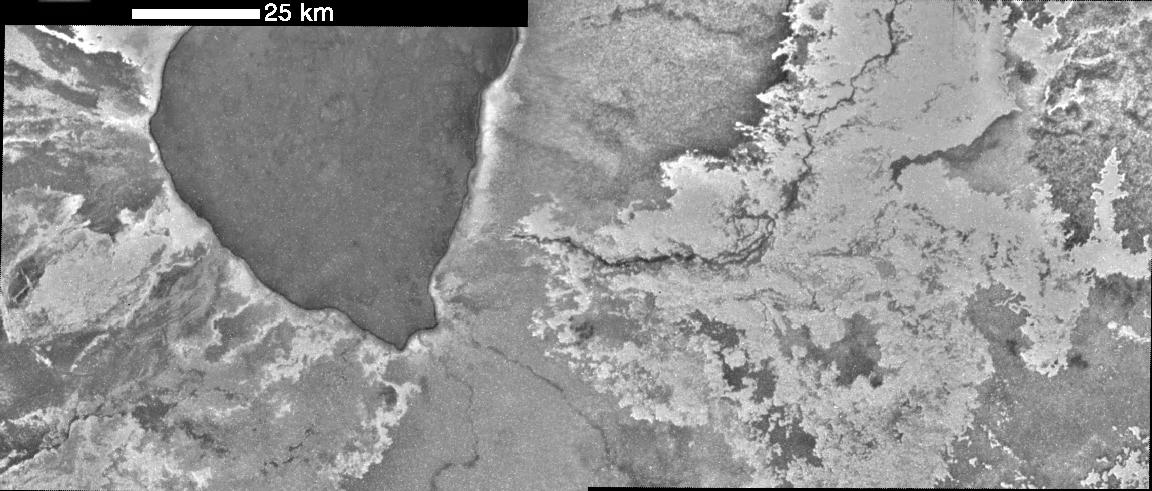

Emakong Patera is a large, dark caldera from which numerous bright flows extend out in all directions. Unlike many of the other volcanoes on Io, high-temperature material has never been observed at Emakong. NASA's Galileo spacecraft observed this volcano on 25 November 1999, during its 25th orbit to investigate the nature of the lava flows. These high-resolution (150 meters, or yards, per picture element) images reveal the intricate nature of the lava flows.
A bright flow emanates to the southeast of the caldera and spreads eastward. A dark channel runs through the flow and may have fed it as it grew. The margins of this bright flow are convoluted, indicating that the lava was able to move through narrow topographic constrictions or that it experienced numerous small breakouts. These observations are consistent with a low viscosity liquid. A contender for the composition of this bright, low viscosity lava is sulfur. While Galileo has frequently detected high-temperature silicate lava flows, sulfur flows may also be a major component of the surface. Fresh bright flows cover ~2% of the surface, similar to the coverage by dark flows.
The images were taken at a distance of 15000 kilometers (9400 miles) from Io. North is 13 degrees to the left of up.
Image produced by: David Williams, Arizona State University
The Jet Propulsion Laboratory, Pasadena, CA manages the Galileo mission for NASA's Office of Space Science, Washington, DC. JPL is a division of the California Institute of Technology, Pasadena, CA.
This image and other images and data received from Galileo are posted on the World Wide Web, on the Galileo mission home page at http://galileo.jpl.nasa.gov/. Background information and educational context for the images can be found at http://galileo.jpl.nasa.gov/images/io/ioimages.html.
NASA's Planetary Photojournal PIA-02539
May 19, 2000